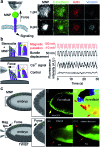Magnetic control of cellular processes using biofunctional nanoparticles
- PMID: 29163884
- PMCID: PMC5672790
- DOI: 10.1039/c7sc01462g
Magnetic control of cellular processes using biofunctional nanoparticles
Erratum in
-
Correction: Magnetic control of cellular processes using biofunctional nanoparticles.Chem Sci. 2017 Dec 1;8(12):8464. doi: 10.1039/c7sc90067h. Epub 2017 Nov 1. Chem Sci. 2017. PMID: 30123474 Free PMC article.
Abstract
Remote control of cellular functions is a key challenge in biomedical research. Only a few tools are currently capable of manipulating cellular events at distance, at spatial and temporal scales matching their naturally active range. A promising approach, often referred to as 'magnetogenetics', is based on the use of magnetic fields, in conjunction with targeted biofunctional magnetic nanoparticles. By triggering molecular stimuli via mechanical, thermal or biochemical perturbations, magnetic actuation constitutes a highly versatile tool with numerous applications in fundamental research as well as exciting prospects in nano- and regenerative medicine. Here, we highlight recent studies, comment on the advancement of magnetic manipulation, and discuss remaining challenges.
Figures



References
Publication types
LinkOut - more resources
Full Text Sources
Other Literature Sources

